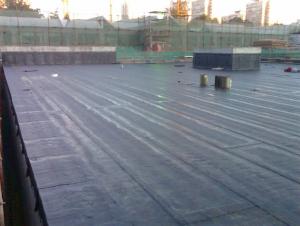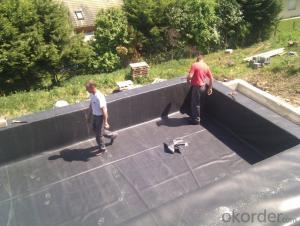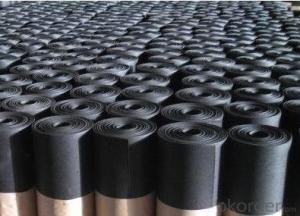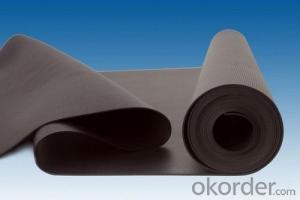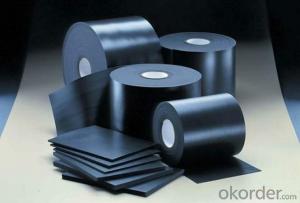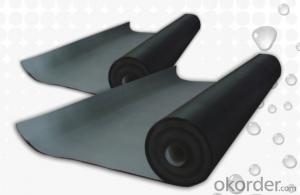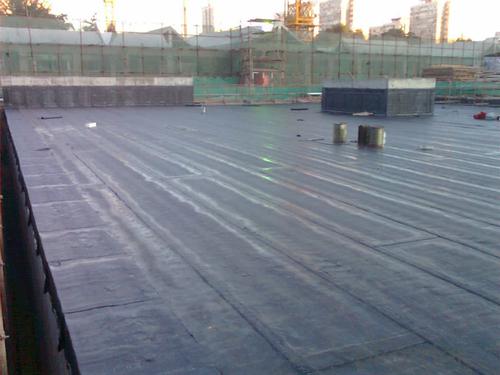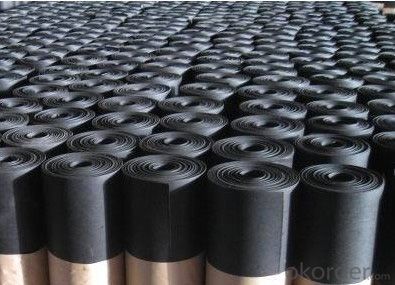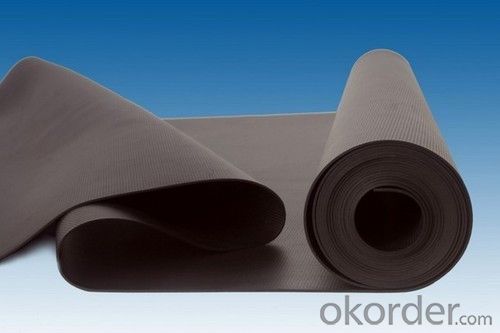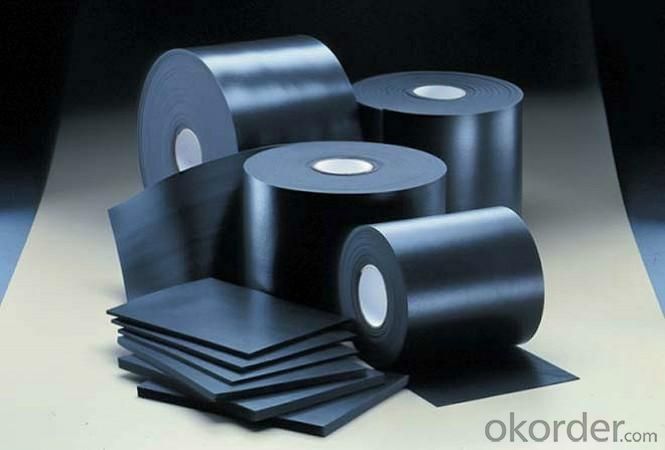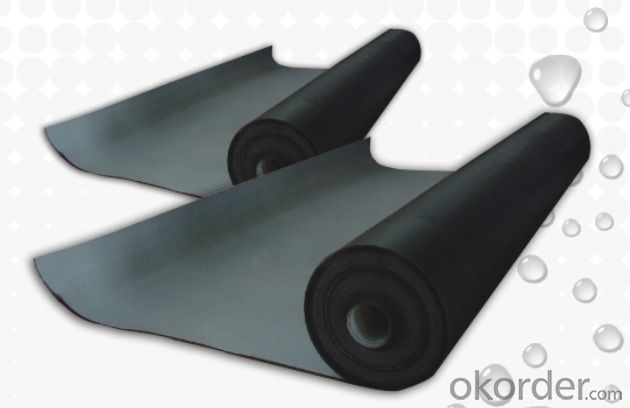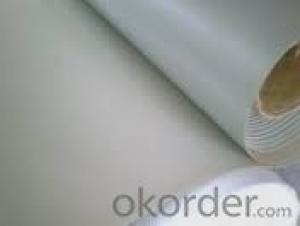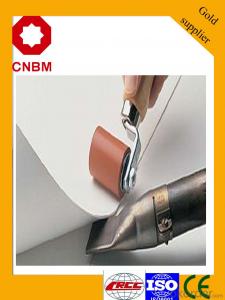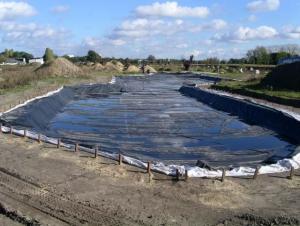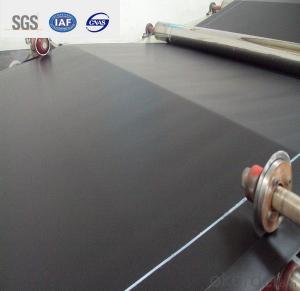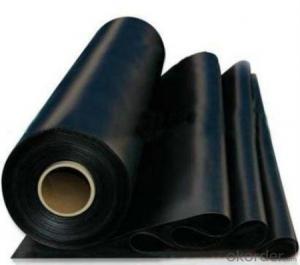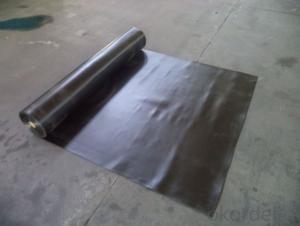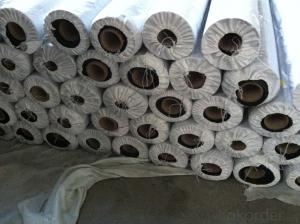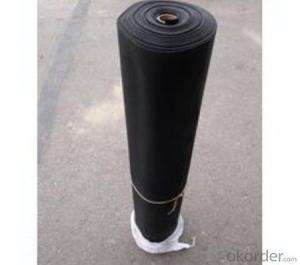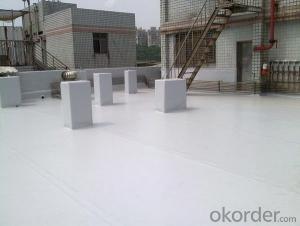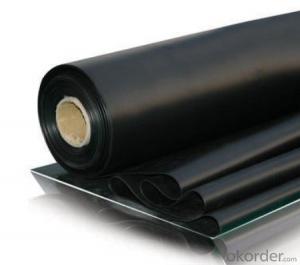Vulcanized EPDM Waterproof Membrane for Exposing Shunshine
- Loading Port:
- Shanghai
- Payment Terms:
- TT or LC
- Min Order Qty:
- 20000 m²
- Supply Capability:
- 1200000 m²/month
OKorder Service Pledge
OKorder Financial Service
You Might Also Like
Vulcanized EPDM Waterproof Membrane for Exposing Shunshine
Description Of Vulcanized EPDM Waterproof Membrane for Exposing Shunshine:
1. EPDM waterproof membrane is made from ternary ethylene-propylene rubber, which is for waterproofing of exposed and non-exposed applications.
2. EPDM waterproof membrane production adopts the world-advanced equipment of cold feeding extrusion and continuous vulcanization technology.
3. EPDM waterproof membrane is of high elasticity among high polymer waterproof materials and becomes a world-popular waterproofing material.
Main Features of Vulcanized EPDM Waterproof Membrane for Exposing Shunshine:
1. Excellent physical and mechanical performance
2. High tearing resistance
3. Good deformation adaptability
4. High puncture resistance
5. High aging resistance
6. UV resistance
Specifications of Vulcanized EPDM Waterproof Membrane for Exposing Shunshine:
| Material | EPDM Rubber |
| Size | 1.2m (width)*20m (length) or customized, weldable type 2.05m or 4m width |
| Thick | 1.2mm, 1.5mm, 2.0mm |
| Type | Vulcanized & Weldable |
| Pattern | Non-reinforced (homogeneous) |
| Certificate | ISO9001/14001 |
Applications of Vulcanized EPDM Waterproof Membrane for Exposing Shunshine:
1.Roofs, Basement, Toilets
2. Industrial and civil building waterproofing
3. Geosynthetic liner for swimming pool, channels, irrigation system
4. Especially suitable for projects with high requirements in durability, anti-corrosion and deformation.
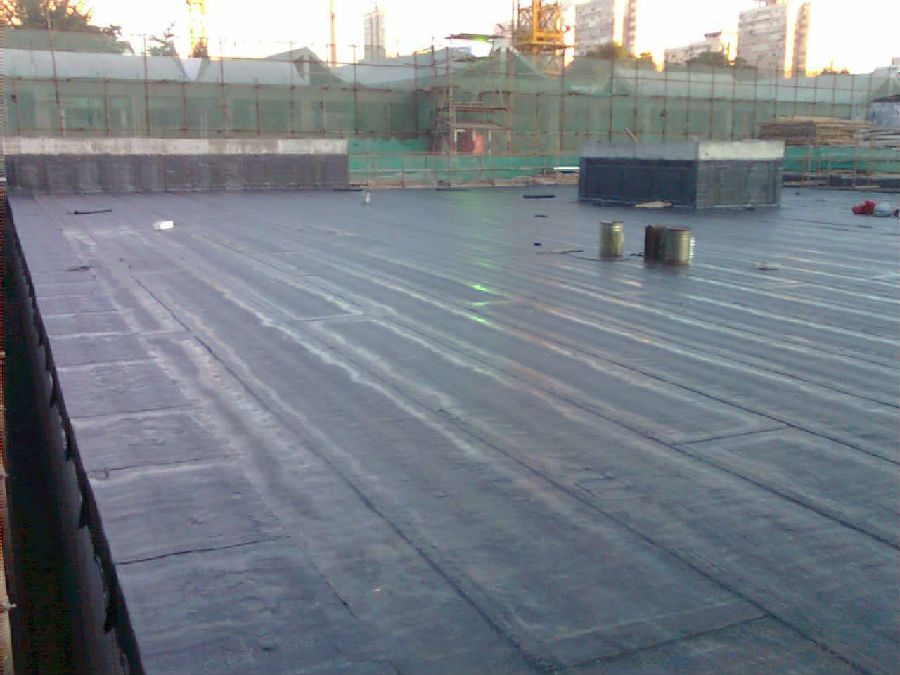
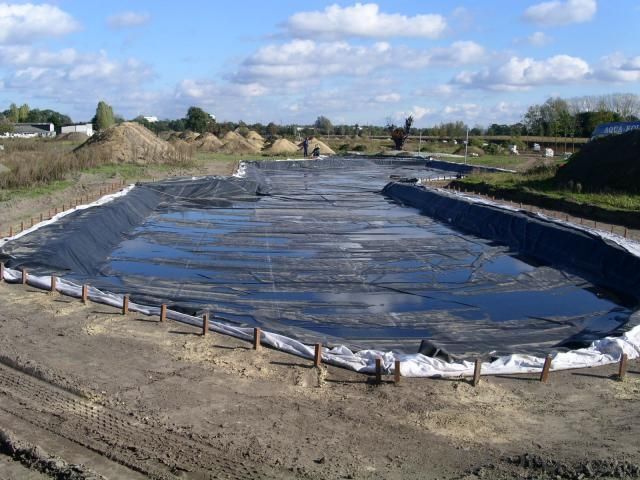

IMages of Vulcanized EPDM Waterproof Membrane for Exposing Shunshine:
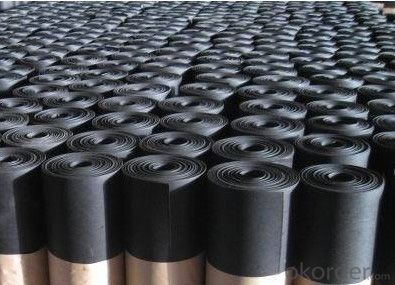



FAQ of Vulcanized EPDM Waterproof Membrane for Exposing Shunshine:
1. What are we supplying?
We are specialized in producing Colorful Asphalt Roof Shingle, SBS/APP modified bitumen waterproof membrane, Self adhesive bitumen waterproof membrane, PVC waterproofing membrane, EPDM rubber roofing membrane, Single Component Polyurethane Waterproof Coating, and Spray Polyurea Waterproof Coating
.
2. How Many years experience do we have?
We have been exported to more than 20 countries in the past 15 years.
3. How long do we usually reply your request?
We always reply our customer within 24 hours.
- Q: Is a waterproofing membrane resistant to rodent or insect infestation?
- A waterproofing membrane has the ability to resist infestation from rodents or insects. Most waterproofing membranes are constructed using materials that rodents or insects find unappealing, such as bitumen or synthetic polymers. Furthermore, these membranes are typically installed in a manner that eliminates any gaps or openings through which pests could enter. However, it should be noted that no waterproofing system is completely impervious to infestation. If there are existing entry points or if the membrane is damaged or improperly installed, rodents or insects may still be capable of breaching the waterproofing system. Regular inspection and maintenance are essential to ensure the integrity of the waterproofing membrane and to prevent any infestation from occurring.
- Q: Can a waterproofing membrane be used in elevator pits?
- Yes, a waterproofing membrane can be used in elevator pits. Elevator pits are vulnerable to water damage and moisture accumulation, so applying a waterproofing membrane can help prevent water intrusion and protect the elevator components from potential damage.
- Q: Can a waterproofing membrane be used on precast chrome surfaces?
- Yes, a waterproofing membrane can be used on precast chrome surfaces. The membrane will provide a protective barrier against water penetration, ensuring the durability and longevity of the precast chrome surfaces.
- Q: Can a waterproofing membrane be used in conjunction with drainage systems?
- Yes, a waterproofing membrane can be used in conjunction with drainage systems. The membrane provides a barrier to prevent water penetration, while the drainage system helps to channel and remove any water that may accumulate. This combination ensures effective and comprehensive waterproofing for various applications such as basements, roofs, and underground structures.
- Q: Can a waterproofing membrane be used on metal block surfaces?
- Yes, a waterproofing membrane can be used on metal block surfaces. Waterproofing membranes are versatile and can be applied to various surfaces, including metal blocks, to provide a protective barrier against water damage and leaks.
- Q: What is the warranty or guarantee for a waterproofing membrane?
- The warranty or guarantee for a waterproofing membrane typically varies depending on the manufacturer and product. It can range from a few years to a lifetime, generally covering any defects in materials or workmanship that may cause the membrane to fail. It is important to review the specific warranty terms and conditions provided by the manufacturer to understand the coverage and any limitations.
- Q: Can a waterproofing membrane be used in food processing or pharmaceutical facilities?
- Yes, a waterproofing membrane can be used in food processing or pharmaceutical facilities. Waterproofing membranes are designed to provide a protective barrier against moisture, which is beneficial in environments where hygiene and cleanliness are paramount, such as food processing or pharmaceutical facilities. By preventing water penetration, these membranes help maintain a dry, clean, and hygienic environment, ensuring the safety and integrity of the products being processed or manufactured.
- Q: Can waterproofing membranes be used on outdoor decks?
- Yes, waterproofing membranes can be used on outdoor decks. Waterproofing membranes are a popular choice for outdoor decks as they provide an effective barrier against moisture, preventing water from seeping through and causing damage to the underlying structure. These membranes are typically made of durable materials such as rubber or PVC and are designed to withstand exposure to the elements. They are applied directly onto the deck surface, creating a waterproof seal that protects the deck from rain, snow, and other forms of moisture. Additionally, waterproofing membranes can also help to prolong the lifespan of the deck by preventing water damage, rot, and decay. Therefore, using waterproofing membranes on outdoor decks is a practical and effective solution for maintaining the integrity and longevity of the deck.
- Q: Can a waterproofing membrane be used in areas with seismic activity?
- Yes, a waterproofing membrane can be used in areas with seismic activity. In fact, it is highly recommended to use a waterproofing membrane in such areas to protect structures from potential water damage caused by seismic events. Seismic activity can cause cracks and movement in buildings, which can lead to water leakage and subsequent structural damage. By installing a waterproofing membrane, it creates a barrier that prevents water from penetrating into the structure, even during seismic events. This helps maintain the integrity of the building and prevents costly repairs and potential safety hazards. Additionally, waterproofing membranes are designed to be flexible and can withstand movement and vibrations caused by seismic activity, making them suitable for use in these areas.
- Q: Can a waterproofing membrane be used on precast concrete block surfaces?
- Precast concrete block surfaces can benefit from the application of a waterproofing membrane. These membranes are commonly used to safeguard below-grade structures, like basements and foundations, from water infiltration. When constructing these structures, precast concrete blocks are frequently utilized, and the use of a waterproofing membrane can prevent water from seeping into the concrete and causing harm. The membrane acts as a barrier, prohibiting water from passing through while still allowing the concrete to breathe and release any accumulated moisture. Furthermore, waterproofing membranes can enhance the overall durability and lifespan of precast concrete blocks by shielding them from moisture-related problems such as cracking, spalling, and corrosion. It is crucial to select a waterproofing membrane that is specifically designed for below-grade applications and is compatible with concrete surfaces to ensure proper adhesion and long-term efficacy.
Send your message to us
Vulcanized EPDM Waterproof Membrane for Exposing Shunshine
- Loading Port:
- Shanghai
- Payment Terms:
- TT or LC
- Min Order Qty:
- 20000 m²
- Supply Capability:
- 1200000 m²/month
OKorder Service Pledge
OKorder Financial Service
Similar products
Hot products
Hot Searches
Related keywords
